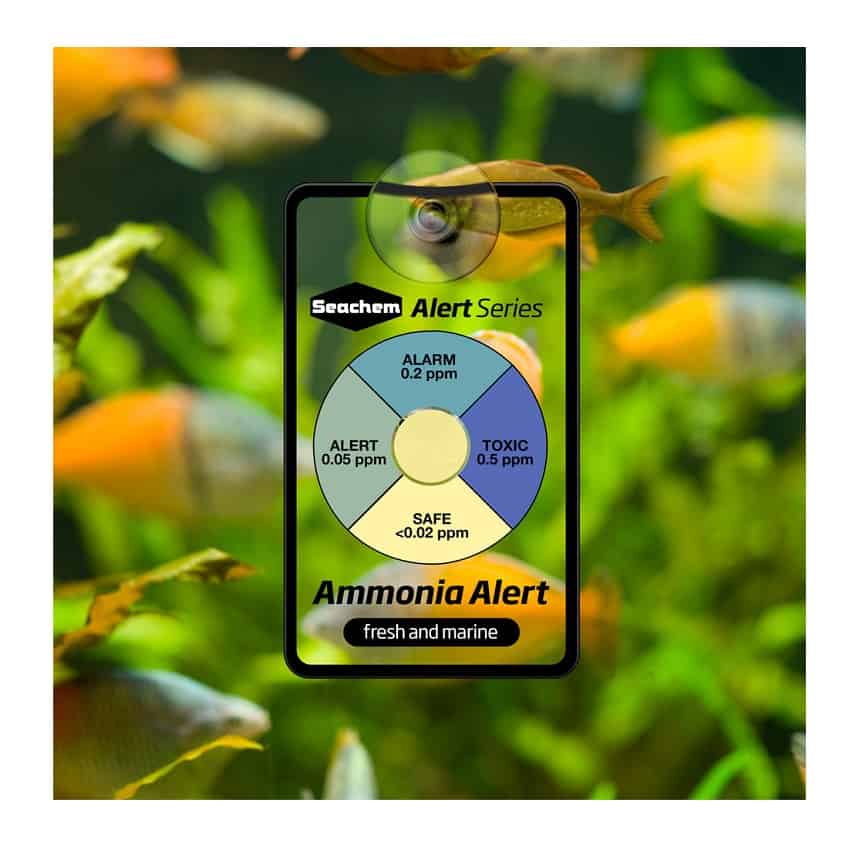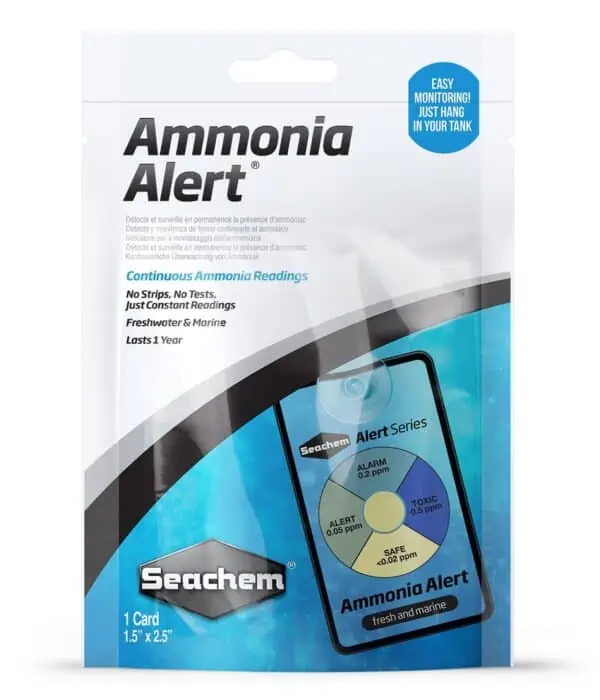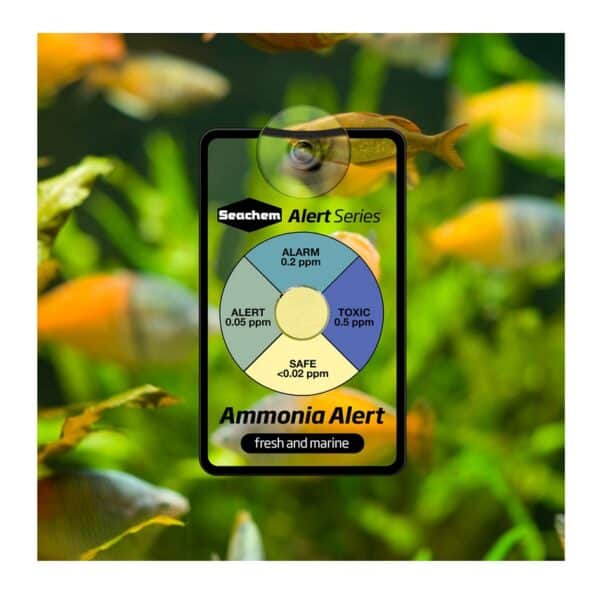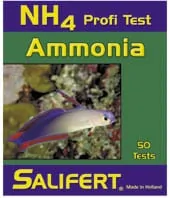Seachem Ammonia Alert
€12,25
Seachem Ammonia Alert Continuously detects and monitors free ammonia
In stock
Seachem Ammonia Alert Continuously detects and monitors free ammonia
Seachem Ammonia Alert® is an innovative color device designed for the continuous detection and monitoring of toxic free ammonia. The sensor changes color from yellow to green to blue, depending on the ammonia concentration. There is no need for test kits, chemicals, or complex procedures; it provides constant readings.
- No test kits, chemicals, or procedures are needed; just constant readings.
- Lasts over a year.
- Suitable for both marine and freshwater environments.
This device detects free ammonia levels of less than 0.05 mg/L (ppm) and alerts you to potential dangers before any signs of stress appear in your aquatic life. In the absence of free ammonia, the unit will display a yellow or faint yellow-green color. It is normal for the dry sensor to have a greenish hue, and it may take a few days for it to equilibrate with the water. The presence of free ammonia is detected continuously, with a response time of approximately 15 minutes. However, when ammonia levels decrease, it may take about 4 hours for the sensor to indicate a reduction from TOXIC to SAFE.
Interpretation
No action required.
Tolerated for 3-5 days. Monitor and consider a water change soon.
Tolerated for 1-3 days. Perform a water change soon.
Perform a water change or treat with AmGuard™ for emergency ammonia removal.
As little as 0.02 mg/L of free ammonia will produce a greenish hue on the detector surface. This corresponds to a total ammonia concentration of 0.25 mg/L in marine water at pH 8.3 and 3.6 mg/L in freshwater at pH 7.0.
It is important to note that free ammonia is significantly more toxic than ionized ammonia. The ALERT color corresponds to approximately 0.05 mg/L of free ammonia, ALARM to about 0.2 mg/L, and TOXIC to about 0.5 mg/L. A water change should be considered for any readings other than SAFE. The ALERT concentration can be tolerated for 3-5 days, ALARM for 1-3 days, and TOXIC levels are urgently harmful, requiring immediate action.
No special care is required beyond removing algae with a clean, soft material. Please avoid touching the sensor with your fingers, as skin oils can damage it. It is also advisable not to use bleach, soap, detergents, or hard objects for cleaning. Some dye medications may discolor the sensor. The sensitivity of the sensor improves with age, as long as it does not dry out; however, drying does not permanently impair the unit. For the most accurate readings, the unit should be viewed under natural daylight or light that simulates daylight. Red enhancing light can minimize green and blue hues, reducing the apparent sensitivity of the sensor. You can check the response by briefly holding it over an ammonia bottle; the color should change rapidly.
FAQ
Q: How long will a Seachem Ammonia Alert® work?
A: The Ammonia Alert® sensor should function for about a year before needing a replacement. To test it, gently hold the card over a bottle of ammonia; the sensor should quickly change to a dark blue. It may take about an hour for it to return to its original color.
Q: I have another test kit that showed positive for ammonia, but the Seachem Ammonia Alert® never changed color. Is it still good?
A: It is likely that the other test kit was measuring total ammonia, which includes both free (NH3) and ionic (NH4) ammonia. The Ammonia Alert® specifically measures free ammonia, which is the harmful form. Ionic ammonia does not pose a threat to fish. However, as pH increases, more of the total ammonia converts from ionic to free ammonia, making it important to understand total ammonia levels as well.
| Weight | 0,1 kg |
|---|






